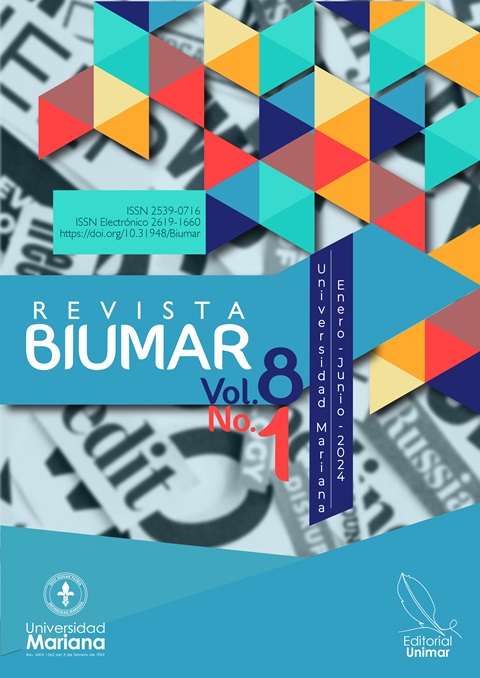Bullying in school contexts, towards an education beyond bullying
DOI:
https://doi.org/10.31948/rb.v8i1.4114Keywords:
alterity, bullying, pedagogy, otherness, sameness, education, intimacy, power, time, language, freedom, spaceAbstract
Within the social processes in which are immersed the subject, especially in schools, allows you to focus on the presence of intimidation as recurrent social practice today and which in turn makes an active part of the realities in which this subject is confronted in his diary live; so, as it is organized an investigation that goes beyond a simple fact that reflects a recognition of a sameness, an otherness and intimacy, where each one comes to light refuses to recognition by another and translates it in denial on the other.
Intimidation that makes contrast with the acquisition of a dignity, a manifestation of the do, think, say of each subject and that transcends their privacy to put on trial its intensity by acknowledging you as a human being, as an individual, as subject which makes membership of a collective, a society, who in turn is constantly changing in order to be established from its sameness in a historic moment that reflects dynamism, transcendence, projection and project his sameness from that essence that characterizes it as a unique, particular and able to confront a reality that limits it to be who is really.
The problem of intimidation is addressed as a practice of systematic, intentional and sustained violence in the time it historically has been expressed and expressed in relations of domination and negation of the other, emphasizing that this scenario of intimidation, is now in force not only from aggression between the different actors that are part of the social dynamics that occur in school settings, which could be understood as a symptom or a clear sign of the complexity of the phenomenon, but as a systematic way of subjecting the other, from the interest of society and the system to perpetuate disciplined and homogeneous thoughts that facilitate the exercise of oppression, staying attached to the possibility of transforming reality of emancipation and envision other ways to pass in the present.
In tension with the above, it seeks to affirm a place of enunciation to think intimacy and otherness as alternative horizons practices of intimidation at School. Intimacy conceived as that of I hardly made explicit to others who even comes as a mystery to himself, being linguistically inexpressible, susceptible of being in what is silent, yet builds on the close relationship profound and everyday another, communicating in silence and non-speech acts (Pardo, 1996); and otherness configured as the only condition of the subject, what makes it irreducible, the possibility of another and have the ability to discover himself from the divergence of those also exist or around it, affecting it that therefore it is unique and singular.
Author Biography
Daniel Armando Velasco Melo, Universidad Mariana
Magíster en Educación desde la diversidad; psicólogo. Administrativo, Vicerrectoría de Desarrollo Humano Integral
References
Arteaga, N., Delgado, J. L., Mejía, C. L., Salazar, E. C. y Velasco, D. (2014). Intimidación, intimidad y alteridad en contextos escolares [Informe de investigación, Universidad de Manizales]. https://ridum.umanizales.edu.co/xmlui/bitstream/handle/20.500.12746/1959/Intimidaci%C3%B3n%2C%20Intimidad%20y%20Alteridad%20en%20Contextos%20Escolares.pdf.pdf?sequence=1&isAllowed=y
Avilés, J. M. (2006). Diferencias de atribución causal en el bullying entre sus protagonistas. Revista Electrónica de Investigación Psicoeducativa, 4(9). https://doi.org/10.25115/ejrep.v4i9.1188 DOI: https://doi.org/10.25115/ejrep.v4i9.1188
Calvo, Á. R. y Ballester, F. (2007). Acoso escolar: procedimientos de intervención. EOS Madrid.
Cerezo, F. (1997). Conductas agresivas en la edad escolar. Aproximación teórica y metodológica: propuestas de intervención. Pirámide.
Corsi, J. y Peyrú, G. M. (2003). Violencias sociales. Editorial Ariel.
Freire, P. (1982). Pedagogía del oprimido. Siglo XXI Editores.
Foucault, M. (1992). El orden del discurso. (Trad. Alberto González). Tusquets Editores.
Garaigordobil, M. y Oñederra, J. A. (2010). Inteligencia emocional en las víctimas de acoso escolar y en los agresores. European journal of education and psychology, 3(2), 243-256. https://doi.org/10.30552/ejep.v3i2.55 DOI: https://doi.org/10.30552/ejep.v3i2.55
Heinsohn, R., Chaux, E. y Molano, A. (2010). "La chispita que quería encender todos los fósforos": Percepciones, creencias y emociones frente a la intimidación en un colegio masculino. Voces y Silencios: Revista Latinoamericana de Educación, 1(1), 5-22. https://doi.org/10.18175/vys1.1.2010.01 DOI: https://doi.org/10.18175/vys1.1.2010.01
Maturana, G. A., Pesca, A. M., Urrego, Á. L. y Velasco, A. (2009). Teoría sustantiva acerca de las creencias en convivencia escolar de estudiantes, docentes y directivos docentes en tres colegios públicos de Bogotá D.C. [Tesis de maestría, Pontificia Universidad Javeriana]. https://repository.javeriana.edu.co/handle/10554/420
Mejía, C. L. y Delgado, J. L. (2014). Intimidación, intimidad y alteridad en contextos escolares [Tesis de maestría, Universidad de Manizales]. https://ridum.umanizales.edu.co/xmlui/handle/20.500.12746/1959
Pardo, J. L. (1992). Las formas de la exterioridad. Pre-textos.
Pardo, J. L. (1996). La Intimidad. Pre-textos.
Pérez, S. (2024). La crítica metódica de Michel Foucault. Universidad Autónoma Metropolitana. https://doi.org/10.28928/omp/ebook/2024/562/csr/criticametodica DOI: https://doi.org/10.28928/omp/ebook/2024/562/csr/criticametodica
Ramos, M. J. (2007). Violencia escolar, un análisis exploratorio [Tesis doctoral, Universidad Pablo de Olavide]. https://www.uv.es/lisis/manuel-ramos/violencia-escolar.pdf
How to Cite
Downloads
Downloads
Published
Issue
Section
License
Copyright (c) 2024 Daniel Armando Velasco Melo

This work is licensed under a Creative Commons Attribution 4.0 International License.
Revista Biumar es publicada por la Editorial UNIMAR de la Universidad Mariana bajo los términos de la licencia Creative Commons Reconocimiento 4.0 Internacional (CC BY 4.0)






